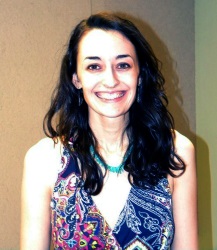 PVE Sheffler offers engineering, design and surveying services to clients in the energy, commercial and residential sectors, including Civil, Structural and Environmental Engineering as well as title mapping and GIS. Based in the Pittsburgh area, the firm also has offices in New York, West Virginia and Ohio.
PVE Sheffler offers engineering, design and surveying services to clients in the energy, commercial and residential sectors, including Civil, Structural and Environmental Engineering as well as title mapping and GIS. Based in the Pittsburgh area, the firm also has offices in New York, West Virginia and Ohio.
Gabrielle Bovard, Architectural Designer, has been using Design Master Photometrics outdoor site lighting software for just over a year. “We use Design Master Photometrics for every lighting design plan we do, whether the project comes from our structural engineering, civil engineering, landscape, oil & gas or surveying team,” Ms. Bovard describes. “They just tell me what the requirements are for the jurisdiction they’re working in and I create a photometric plan for them.”
“Before we got Design Master Photometrics, we outsourced our lighting plans,” says Ms. Bovard. “Not only was that extremely expensive, but also it slowed us down because we had to juggle multiple deadlines between our company, our client and whomever we hired.”
“Another problem with outsourcing is that oftentimes a project can change very quickly and very frequently. Now instead of trying to accomplish changes through a third party I can just import an updated IES file into Design Master Photometrics and off I go,” Ms. Bovard explains.
“Design Master Photometrics is really intuitive and easy to use,” states Ms. Bovard. “It just adds a couple of tabs to AutoCAD, so everything I need is consolidated—it’s all right there.”
“I did my first lighting plan the day I downloaded the software, which says a lot about how easy it is to figure out,” Ms. Bovard adds. “I’ve only had to call support a few times, but already I’m getting to know the people I talk to and any issue gets resolved very quickly.”
Normally lighting designs are reviewed by municipalities, whose standards for light levels, light trespass and so on must be adhered to. “There are different standards for every project, but the software makes it easy to deal with that,” Ms. Bovard offers.
“Say a municipality requires a one foot-candle light level everywhere on a walking surface. I can move lights around and very quickly update the calculations to make sure I’m within those boundaries. It’s so quick to just add a light and see how that looks and then move it or take it out and—‘click’—see how that works.
“The software displays all the information municipal reviewers need so clearly,” Ms. Bovard amplifies. “There’s a general photometrics chart that the software automatically creates, along with a little lighting legend, both of which are really useful to reviewers.”
Ms. Bovard continues: “Another great feature of Design Master Photometrics is how it accurately imports lighting manufacturers’ IES files without losing any data. With some other programs I’ve seen you actually have to manually input all those lines of IES data, which would be really time-consuming and error-prone.
“I also like that the software makes it easy to see exactly how obstructions like the walls of a building, the slope of the ground or even trees impact the lighting, right down to whether a solid surface contains reflective materials like glass or metal.
“That’s important information for the people designing the structure, and also makes our lighting level calculations super accurate. Most software can’t do that,” Ms. Bovard asserts.
“We’re so budget-conscious here that I know we’re also saving money using the software, or we wouldn’t use it,” Ms. Bovard observes. “I’m not sure how much we’re saving overall, but the annual cost of the software is certainly less than the cost of one outsourced lighting plan.”
“Design Master Photometrics saves us significant time and streamlines our overall workflow versus outsourcing the lighting designs. Even just eliminating the need to find somebody and communicate with them is a big plus,” Ms. Bovard concludes.
©2012-2025, Design Master Software, Inc